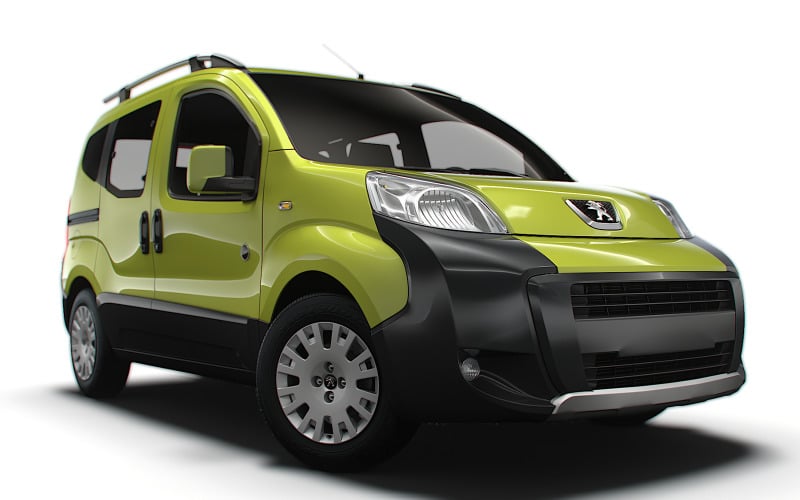

The Peugeot Bipper Tepee was a compact and practical van-based five-seater MPV (Multi-Purpose Vehicle) produced from 2009 to 2014 (or later in some markets), known for its versatility and low running costs, especially in urban environments. It was developed as a joint venture with the Citroën Nemo and Fiat Qubo.
Key Features and Practicality
The Bipper Tepee's design prioritized interior space and maneuverability, making the most of its compact dimensions.
Modularity: It offered a highly flexible interior with a 60/40 split-folding rear bench seat that could be removed entirely to create a van-like cargo capacity of up to 2500 liters.
Access: A key family-friendly feature was the inclusion of twin glazed sliding side doors, which made access easy in tight parking spaces. It also had asymmetric hinged rear doors or a large tailgate for the boot.
Dimensions: Its compact length of around 3.96 m and a tight turning circle under 10 meters made it highly agile and easy to park in urban settings.
Interior: The cabin had an upright driving position, good visibility, and numerous storage cubbies, but the interior plastics were hard and the cabin could be noisy at speed, reflecting its commercial vehicle origins.
Engine Options and Performance
The Rifter was available with small, efficient petrol and diesel engines, designed for economy rather than speed.
The diesel engines were praised for their low running costs and fuel efficiency, with the automatic version capable of around 67.2 mpg (NEDC).
Summary
The Peugeot Bipper Tepee was a highly practical, entry-level MPV that successfully combined the utility of a van with the comfort and features of a small car. Its strong points were its impressive practicality, low running costs, and city maneuverability, though these came at the expense of refinement and performance on the open road.